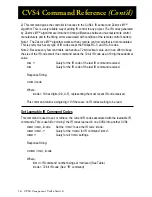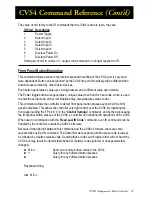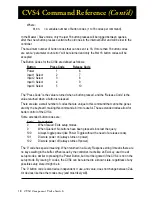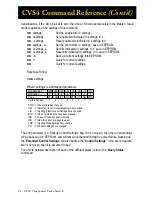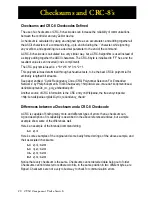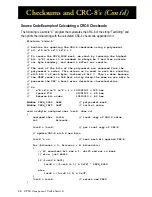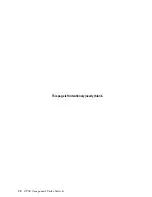
1
CVS4 Component Video Switch
Where:
b1,bn.. = A variable number of button codes (1 to 16 codes per command).
In the Master / Slave mode, only the last 16 button presses will be logged between queries,
after that, new button presses overwrite the old ones in the internal buffer and will be lost to the
controller.
The maximum number of button codes that can be sent is 16. If more than 16 button codes
are sent a “parameter count error” will be returned and only the first 16 button codes will be
accepted.
The Button Codes for the CVS4 are defined as follows:
Button
Press Code
Release Code
Power
1
6
Input 1 Select
2
7
Input 2 Select
3
8
Input 3 Select
4
9
Input 4 Select
5
10
The “Press Code” is the value returned when a button pressed, and the “Release Code” is the
value returned when a button is released.
There are also a small number of codes that are unique to this command that cannot be gener-
ated by the keyboard, making this command a bit more useful. These extended codes allow for
better control of the CVS4.
Some extended button codes are:
Code Description
0
When Issued: Exits setup modes.
0
When Queried: No buttons have been pressed since last the query.
100
Always toggle power (like Power Toggle without the need of a release code).
101
Discrete power on (always turns on power).
102
Discrete power off (always turns off power).
The ‘0’ code has special meaning. When returned in a Query Response string it means there are
no keys waiting in the buffer. When issue by the controller, it acts like an Exit key, used to exit
setup modes, similar to pressing the Power Button, but it will be ignored if the CVS4 is not in the
setup mode. By issuing ‘0’ codes, the CVS4 can be returned to a known state, regardless of any
possible setup state it might be in.
The ‘0’ button code is also device independent. It use, and value, does not change between Zek-
tor devices like the other codes may (and most likely will).
CVS4 Command Reference
(Cont’d)













